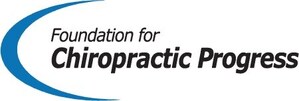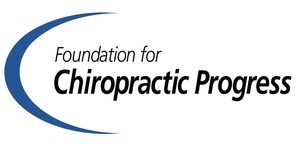SAN JOSE, Calif., Aug. 18, 2020 /PRNewswire/ -- The Foundation for Chiropractic Progress (F4CP), a not-for-profit organization educating the public about the benefits of chiropractic care, has issued a public statement in support of the findings of a randomized clinical trial (RCT) that was published in the Journal of American Medical Association (JAMA Network Open) on August 5 and is now trending.
The study, "Effect of Spinal Manipulative and Mobilization Therapies in Young Adults With Mild to Moderate Chronic Low Back Pain" concludes that, when performed by a doctor of osteopathy (DO) or a physical therapist (PT), neither spinal manipulation therapy (SMT) nor spinal mobilization appeared to be effective treatments for mild to moderate chronic low back pain (LBP). The authors note that neither is more effective than a placebo.
This is an important finding as it helps consumers understand the difference between SMT provided by a doctor of chiropractic and SMT performed by other healthcare providers. While SMT is the primary focus of chiropractic, it is one of many therapies employed by DOs and PTs. Taken in conjunction with previous studies, the JAMA study effectively demonstrates the widely held understanding that chiropractic spinal manipulation is more effective.
"Many consumers and even some medical professionals still assume that spinal manipulation is equally effective regardless of the provider type," said Sherry McAllister, DC, executive vice president of the F4CP. "These findings, when taken along with the findings of previous papers, help to differentiate the effectiveness of spinal manipulation for low back pain delivered in the context of chiropractic care. This helps explain why historically 94% of spinal manipulation is provided by doctors of chiropractic. This study also brings into question the effectiveness of mobilization of the spine for low back pain as provided by physical therapists and osteopaths."
In the U.S., doctor of chiropractic programs typically take four years to complete and require at least three years of undergraduate college education for admission, a total of seven years of post-high school education. This includes rigorous clinical training that focuses primarily on chiropractic spinal manipulation.
Among North American regulated health professionals, SMT is most often delivered by DCs, and to a lesser extent, by a specially trained subset of physiotherapists and osteopathic practitioners. It is also included in the scope of practice of naturopaths (NDs) and physicians (MDs), although these providers rarely use SMT as their primary treatment modality (source: BMC).
In 2018, The Lancet published a three-part series on LBP, calling for worldwide recognition of the disability associated with the disorder and the removal of harmful practices. In the second paper, recommendations for the treatment of LBP were outlined, including spinal manipulation, which is most often performed by a doctor of chiropractic.
In a 2017 study published in JAMA, Paige et al., completed a systematic review of randomized controlled trials on the effectiveness of Spinal Manipulative Therapy (SMT) for acute (6 weeks) low back pain. Of 26 eligible studies identified, 15 RCTs (1711 patients) provided moderate-quality evidence that SMT has a statistically significant association with improvements in pain. The rest of the RCTs (1381 patients) produced moderate-quality evidence that SMT has a statistically significant association with improvements in function.
To access additional research in support of chiropractic care and the efficacy of spinal manipulation, visit https://www.f4cp.org/new-research/.
In addition, the results of another RCT suggest that chiropractic manipulative therapy in conjunction with standard medical care offers a significant advantage for decreasing pain and improving physical functioning when compared with standard care alone. "As the opioid crisis rages on, consumers can be even more confident that choosing chiropractic spinal manipulation is the right choice," said Dr. McAllister. "Numerous evidence-based guidelines recommend conservative (non-drug, non-surgical) care such as chiropractic care as front-line treatment that is effective when done by a trained professional."
Research has shown chiropractic care is faster, safer, less costly and more effective. Chiropractic patients are highly satisfied with their care, according to multiple surveys. Results from the Gallup-Palmer College of Chiropractic 2018 Annual Report found that more than half (52%) of adults who saw a DC for significant neck or back pain said it was because the DC offered "the most effective treatment for my pain" as compared to other types of care.
About the Foundation for Chiropractic Progress
A not-for-profit organization, the Foundation for Chiropractic Progress (F4CP) informs and educates the general public about the value of chiropractic care and its role in drug-free pain management. Visit www.f4cp.org; call 866-901-F4CP (3427).
Media contact:
Marcia Rhodes, Amendola Communications for F4CP
[email protected]
(602) 793-1561
SOURCE Foundation for Chiropractic Progress

Related Links
WANT YOUR COMPANY'S NEWS FEATURED ON PRNEWSWIRE.COM?
Newsrooms &
Influencers
Digital Media
Outlets
Journalists
Opted In






Share this article